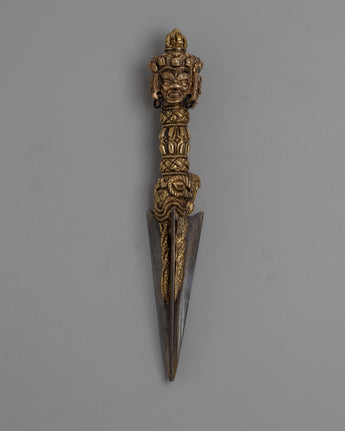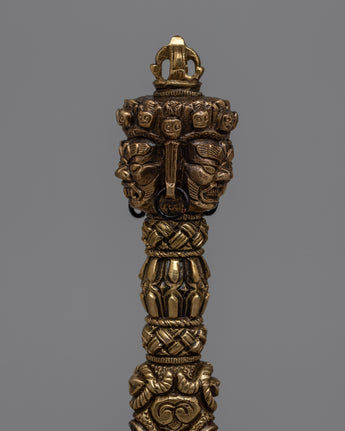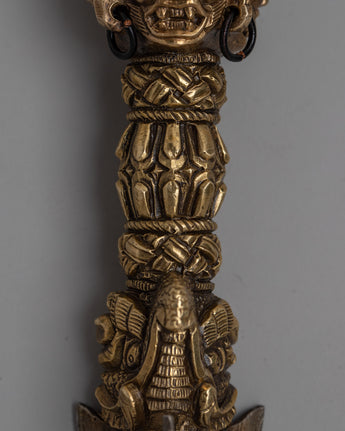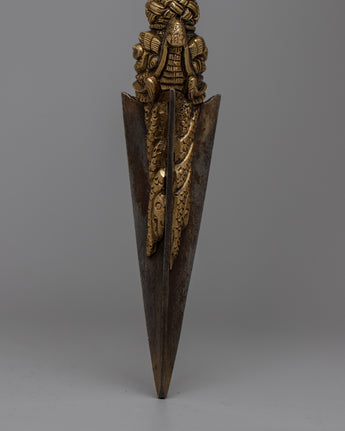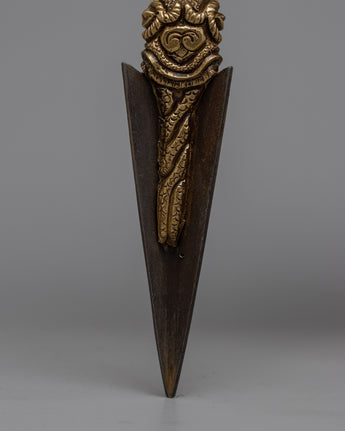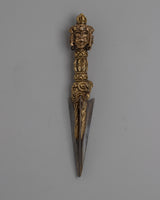
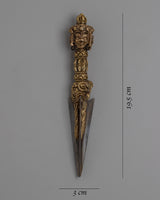
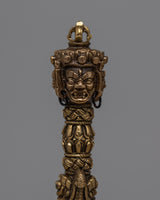
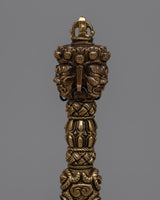
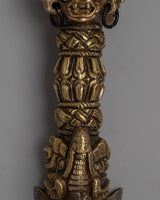
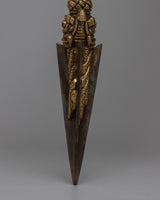
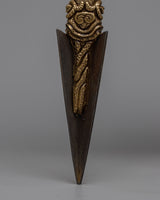
Phurba Dagger Authentic | Dagger for Sacred Rituals and Spiritual Practices

100% AUTHENTIC

HANDMADE

FREE SHIPPING
Phurba Dagger Authentic
About The Ritual Item :
The original and meticulously crafted Phurba dagger is revered in Tibetan culture as a representation of spiritual strength and ritual importance. This holy tool, which is handcrafted with an iron blade and a copper body, represents centuries of respect and custom. Standing 19.5 cm tall, it is a focal point for religious rites and ceremonies and emanates a presence that demands reverence and attention.
In Tibetan Buddhism, the Phurba dagger, sometimes referred to as the "ritual dagger," has profound symbolic importance. It stands for both achieving spiritual enlightenment and subduing evil forces. Its pointed tip pierces through barriers to disclose the truth, and its triple-sided blade represents the cutting through of ignorance, attachment, and aversion. The Phurba dagger is an portrayal of this sacred spiritual implement that can be used to invoke protection, blessings, and consciousness transformation in the quest for enlightenment.
Introduction To The Phurba :
The ceremonial dagger (Sanskrit: Kila; Tibetan: phurba) is important for the expelling of evil and is thought to be especially effective in neutralizing the forces that obstruct Tantric Buddhist practice. It has ancient origins, first appearing in the Indian Rg Veda as the core blade of the vajra used by Indra to destroy the primordial cosmic snake Vritra. Kila, which means peg or stake in Sanskrit, was most likely associated with Vedic sacrifices. Meditation on the Vajrakila Tantra, an early Indian scripture first promoted in Tibet in the eighth century by Padmasambhava, one of the founding teachers of Tibetan Buddhism, is used to invoke the three-headed Vajrakila Buddha.
--------------------------------------------
Size: 19.5cm(Height) x 3cm(Width)
Weight: 0.32kg
Material: Copper, Iron
--------------------------------------------
How to set up your own Buddhist Shrine?
Find a clean, quiet, and uncluttered spot
Set up an altar table, and cover it with an altar cloth that calls to you
Place your sacred item (statue, thangka, or a picture of Buddha) at the center


